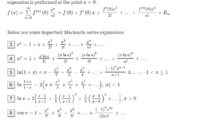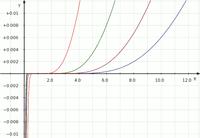I was always under the impression that you cannot find a Maclaurin series expansion for lnx, presumably the reason being is that you can't define the derivative of lnx at x=0 and so the formula fails.
I was searching for something else when i came across this on a website, can anyone help me see how this expansion for lnx has been attained? Is this considered a Maclaurin expansion?

(It's off a website called math24.net)
I was searching for something else when i came across this on a website, can anyone help me see how this expansion for lnx has been attained? Is this considered a Maclaurin expansion?

(It's off a website called math24.net)

